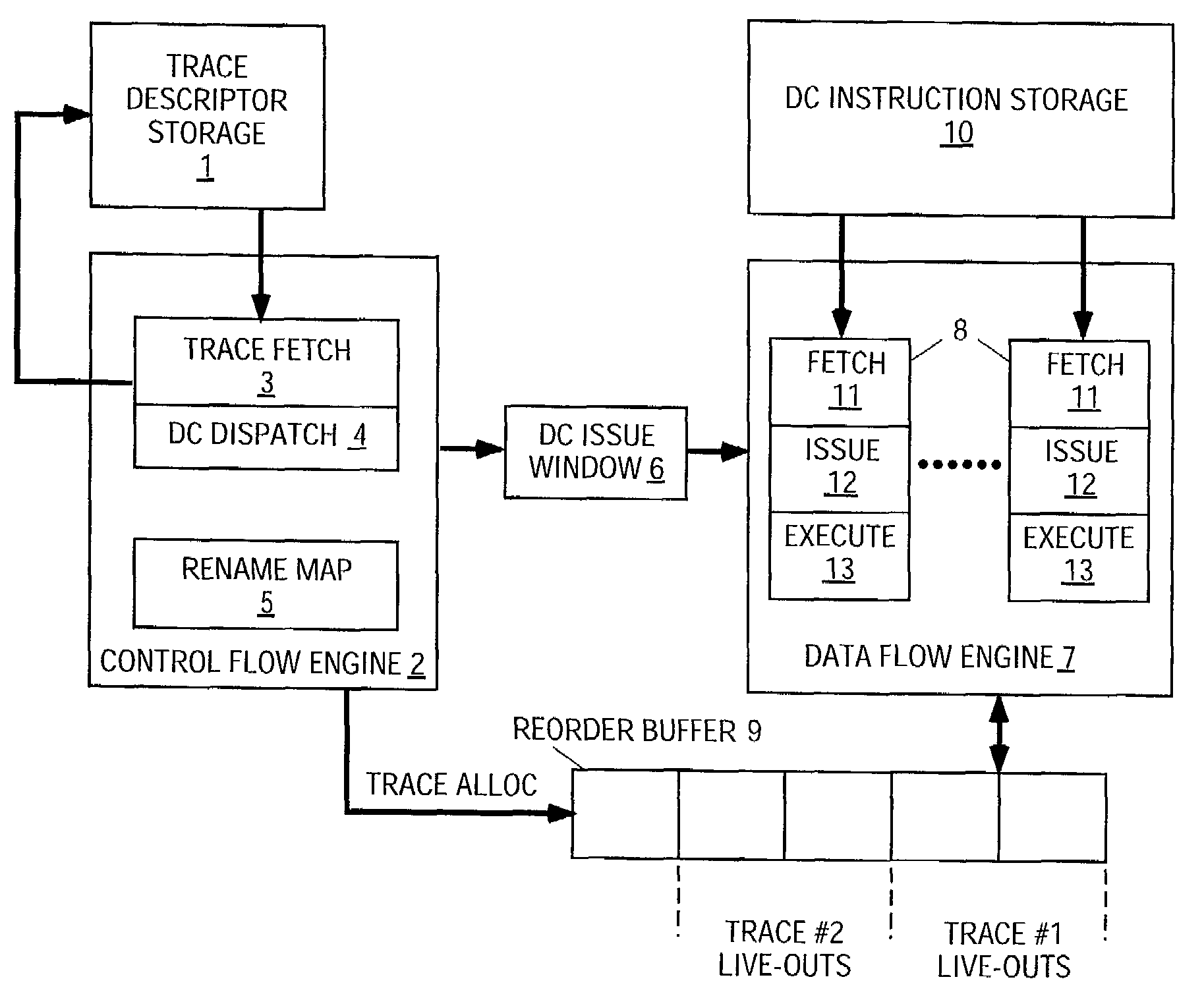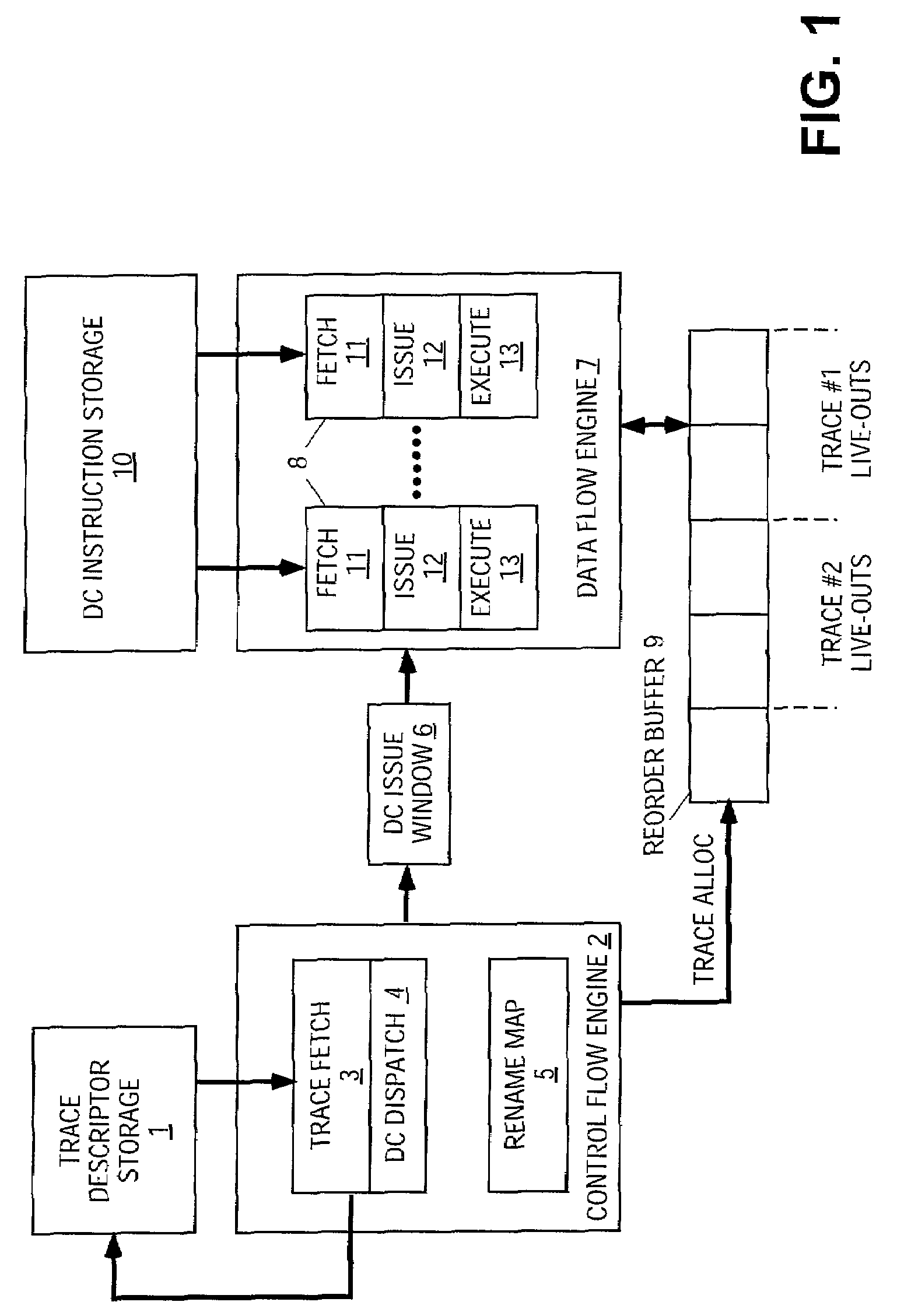Dependence-chain processing using trace descriptors having dependency descriptors
a trace descriptor and dependency chain technology, applied in the microprocessor field, can solve the problems of limited ilp exploited within a trace, preventing the use of the full capabilities of the processor to execute multiple instructions simultaneously, and restricting the processor architecture, application or both
- Summary
- Abstract
- Description
- Claims
- Application Information
AI Technical Summary
Benefits of technology
Problems solved by technology
Method used
Image
Examples
Embodiment Construction
[0019]Exemplary embodiments are described with reference to specific configurations. Those of ordinary skill in the art will appreciate the various changes and modifications to be made while remaining within the scope of the appended claims. Additionally, well known elements, devices, components, circuits, process steps and the like are not set forth in detail in order to avoid obscuring the present invention.
[0020]The present invention involves recasting a program into dependence chains. Dependence chains and information about them are recorded in a storage device. The present invention processes this recorded information in the dependence chains.
[0021]The dependence chain information is formed by partitioning the dynamic program stream into traces according to a maximum trace size and control flow boundaries. Then each trace is further partitioned into completely independent dependence chains along data flow boundaries. One skilled in the art would appreciate that this invention c...
PUM
 Login to View More
Login to View More Abstract
Description
Claims
Application Information
 Login to View More
Login to View More - R&D
- Intellectual Property
- Life Sciences
- Materials
- Tech Scout
- Unparalleled Data Quality
- Higher Quality Content
- 60% Fewer Hallucinations
Browse by: Latest US Patents, China's latest patents, Technical Efficacy Thesaurus, Application Domain, Technology Topic, Popular Technical Reports.
© 2025 PatSnap. All rights reserved.Legal|Privacy policy|Modern Slavery Act Transparency Statement|Sitemap|About US| Contact US: help@patsnap.com



